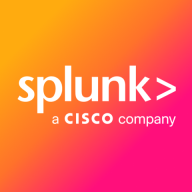

Splunk Observability Cloud and Loom Systems are competing products in the observability space. Splunk Observability appears to have the upper hand regarding scalability and extensive integrations.
Features: Splunk Observability Cloud provides advanced analytics, monitoring, alerting capabilities, real-time visibility, and supports complex IT environments. Loom Systems offers AI-driven predictive insights, easy system integration, and cost-effective analytics.
Room for Improvement: Splunk Observability Cloud could improve by reducing its steep learning curve, decreasing setup complexity, and lowering entry costs for smaller organizations. Loom Systems may enhance by expanding integration options, increasing analytics depth, and improving scalability for larger enterprises.
Ease of Deployment and Customer Service: Splunk Observability Cloud requires more time and resources for deployment and involves complex workflows in customer service, while Loom Systems offers intuitive deployment with straightforward setup and efficient support.
Pricing and ROI: Splunk Observability Cloud has a higher setup cost impacting ROI negatively for smaller organizations, whereas Loom Systems presents a budget-friendly option with attractive ROI due to lower entry costs and efficient analytics.


Splunk Observability Cloud combines log search, data integration, and dashboards for seamless monitoring, enhancing infrastructure visibility and security. Its cloud integration and scalability support diverse environments, improving operational efficiency.
Splunk Observability Cloud offers comprehensive monitoring tools with user-friendly interfaces, enabling end-to-end infrastructure visibility. Its real-time alerting and predictive capabilities enhance security monitoring, while centralized dashboards provide cross-platform visibility. Users benefit from fast data integration and extensive insights into application performance. Despite its advantages, improvements could be made in integration with other tools, data reliability, scalability, and cost management. Users face challenges in configuration complexity and require better automation and endpoint protection features. Enhancing AI integration, alerts, and adaptation for high-throughput services could further improve usability.
What are the key features of Splunk Observability Cloud?In industries like finance and healthcare, Splunk Observability Cloud is implemented for application performance monitoring and infrastructure metrics. Its ability to track incidents and analyze machine data benefits network infrastructure, while distributed tracing and log analysis aid in tackling security threats. Organizations often integrate it for compliance and auditing purposes, enhancing visibility into network traffic and optimizing performance.
We monitor all IT Infrastructure Monitoring reviews to prevent fraudulent reviews and keep review quality high. We do not post reviews by company employees or direct competitors. We validate each review for authenticity via cross-reference with LinkedIn, and personal follow-up with the reviewer when necessary.